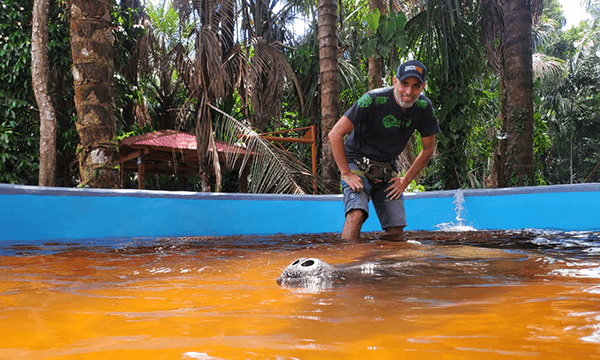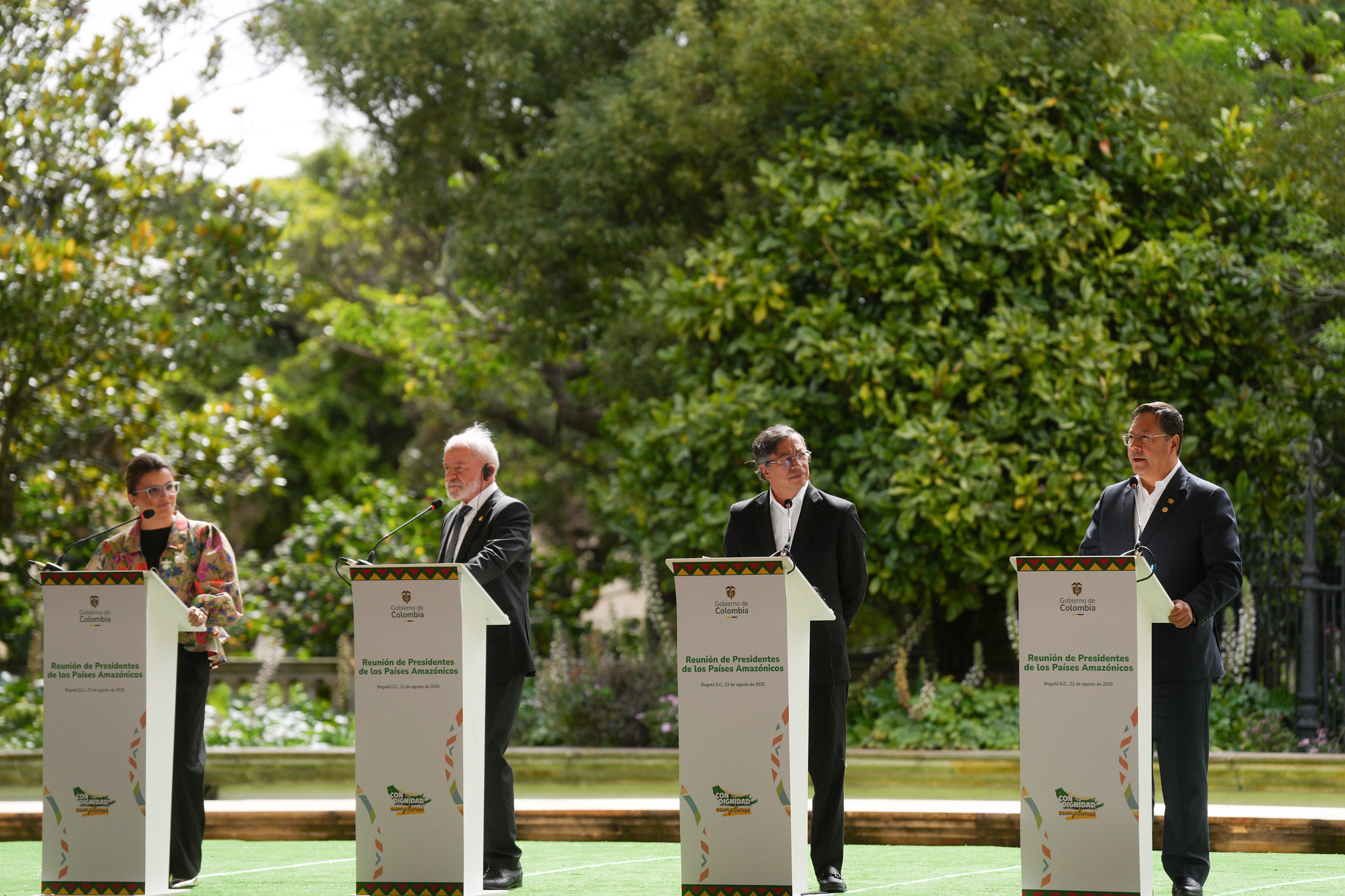The Amazon Rescue Center (CREA) built new spaces to receive and care for American Manatees (Trichechus inunguis) that are rescued by the CREA team. The new facilities will allow CREA to provide better care and management until it is time to release the animals into the rivers of the Amazon.
This cooperation to CREA is given by the Amazon Cooperation Treaty Organization (ACTO), with financing from the German Development Bank (KfW), through the Bioamazon Project.
Located in Iquitos, Peru, the Amazon Rescue Center was born with the objective of rescuing and caring for manatees. It has all started when the recently graduated Biologist Javier Velásquez, met for the first time a baby manatee rescued from wildlife trafficking and there was no adequate care for it in an office. The young Javier Velásquez asked for permission to take the manatee and give a care for it. But they replied that a wild animal could not be given into custody to a person, only to an institution. Therefore, Javier sought the support of some friends and created the Amazon Rescue Center in 2007.
“At that time there was no institution in Peru that knew how to take care for baby manatees. In 2007, we did our first rescue and the project started in a water tank at the uncle house. In 2008 we already had four manatees, but the tanks were not enough. The Peruvian Amazon Research Institute (IIAP) allowed us to use tanks that were originally for pirarucus (Arapaima gigas). We have taken care of 50 manatees and we managed to return 25 to nature”, says Javier Velásquez.
New facilities
The new manatee tanks were built in a circular format to allow a continuous swim for manatees who need exercise to get stronger. The tanks also have a constant and abundant water supply.
In total there are six new tanks: one for water treatment, four for quarantine with three meters in diameter and a weaning tank with eight meters in diameter. In the latter, manatees stop receiving milk and start eating aquatic plants. The new tanks are in open environments, which facilitates the entry of solar radiation, which contributes to their recovery.
A maloca was also built to allow better awareness and education work with visitors. CREA receives about 35 thousand visitors a year.
“Now, after 12 years of work and with the support of ACTO, we have been able to build permanent facilities for the rehabilitation of animals in a suitable environment to save manatees and give them an opportunity to return to nature,” said Velásquez.
Illegal traffic
Javier Velásquez explains that the Loreto region, in the Peruvian Amazon, is very large and there are many scattered communities who still do not know the fact that the manatee is a species in danger of extinction and that its hunting and commercialization is prohibited.
“Then it happens that the animals are captured to try to be sold as pets in the cities. When the police seize them, they need to send the animals somewhere. There, CREA enters, which receives and cares for these animals until it is possible to return them to nature”, Javier explains.
A baby manatee needs to be cared for at least two years of the lactation period. Then they go to a space where they have no contact with people. After six months, in collaboration with park rangers, they are returned to the rivers that are in protected natural areas,
“Before the creation of CREA, all the manatees that were seized in Peru died. Through the work we do, 50 manatees have been rescued, 25 released into the wild and we are preparing another 20 manatees. In November we must release three of them. This is our umbrella species and now we also receive and take care of other animals”, Javier informs.
Environmental education
In addition to rescuing and caring for manatees and other illegally captured animals, CREA does environmental education work with local children and tourists who visit Iquitos. CREA is the most visited place in Iquitos.
CREA has already held environmental education workshops for about 120,000 children in the region and received more than 80,000 tourists from all over the world. Among the most famous are actors such as Harrison Ford, who visited the center in 2015, and Robert de Niro, who met CREA in 2018.
The main ally of CREA is The Dallas World Aquarium, which since 2007 has supported the institution financially. CREA also has the support of the Peruvian Amazon Research Institute (IIAP) and, this year 2020, it received a support from the ACTO, financed by KfW through Bioamazon Project for the construction of new tanks for manatees.


